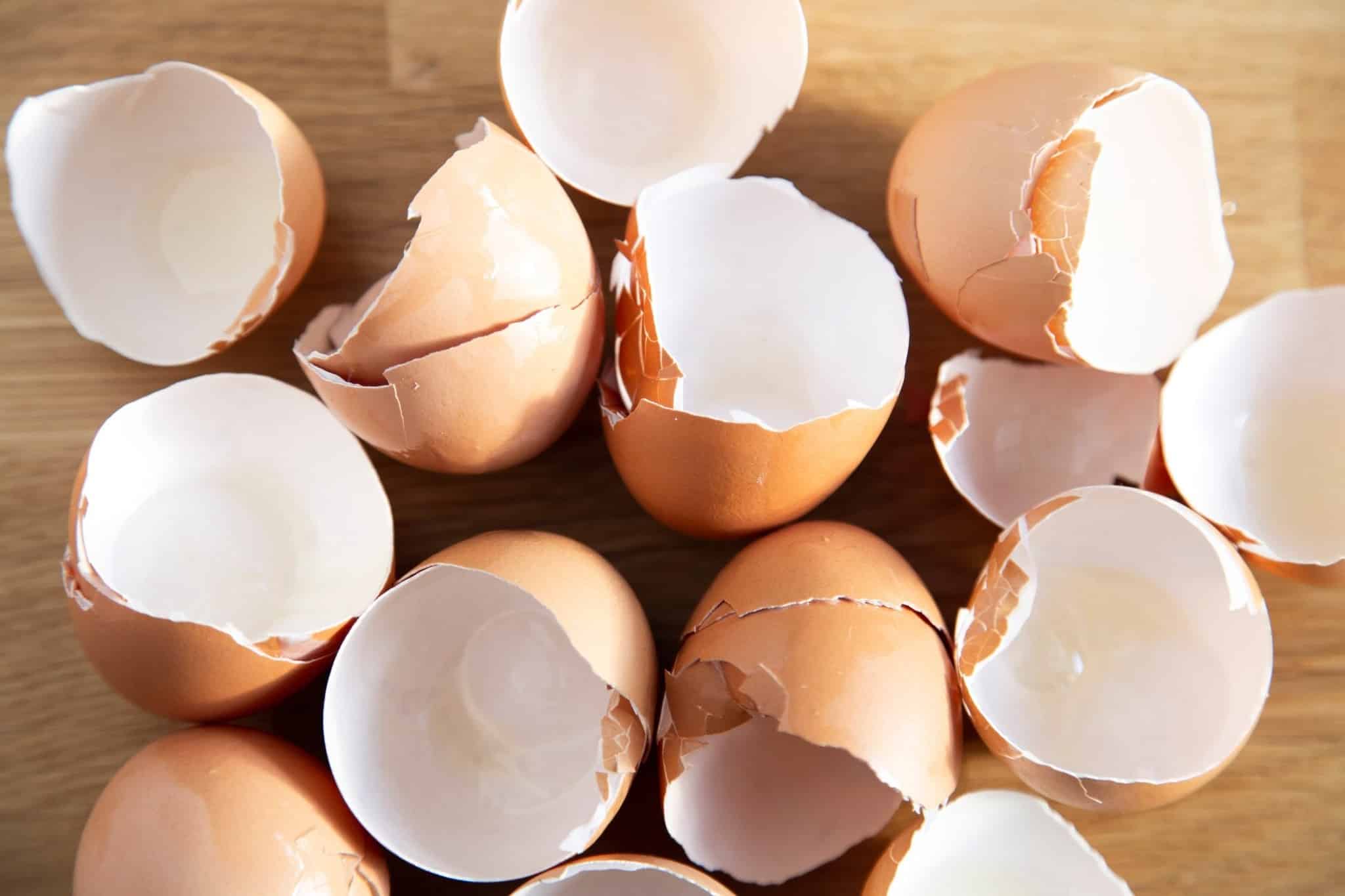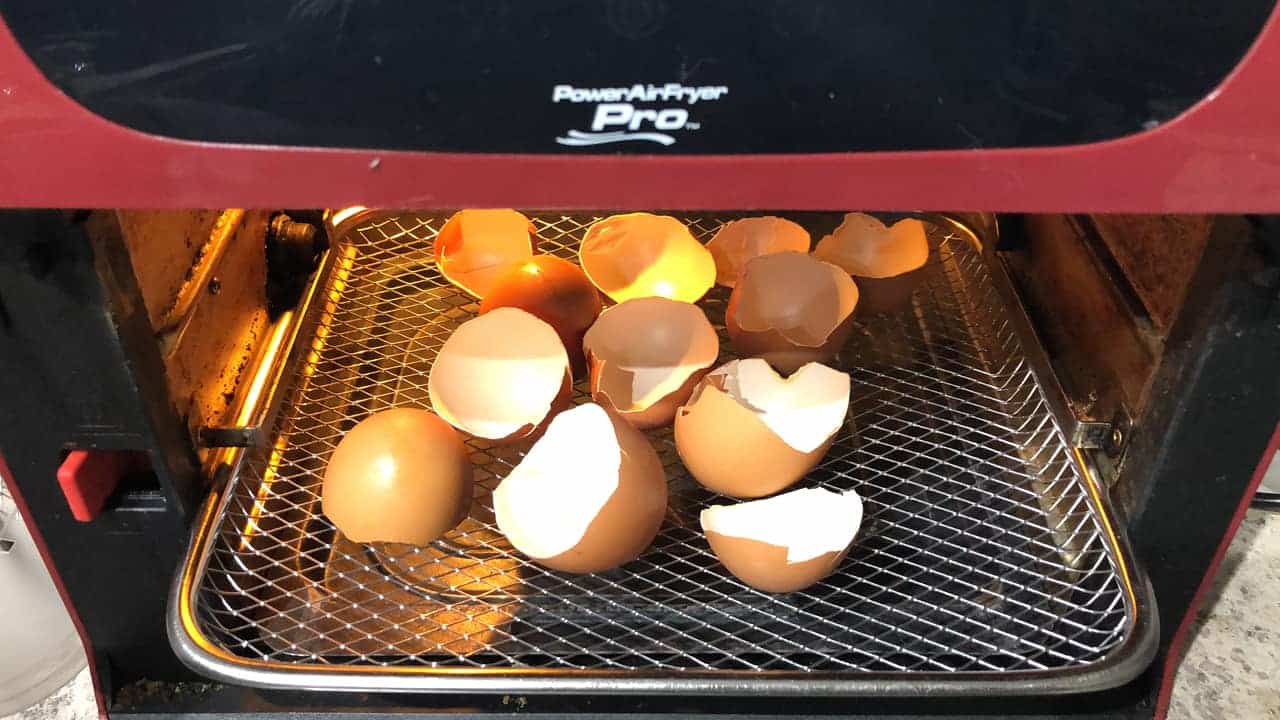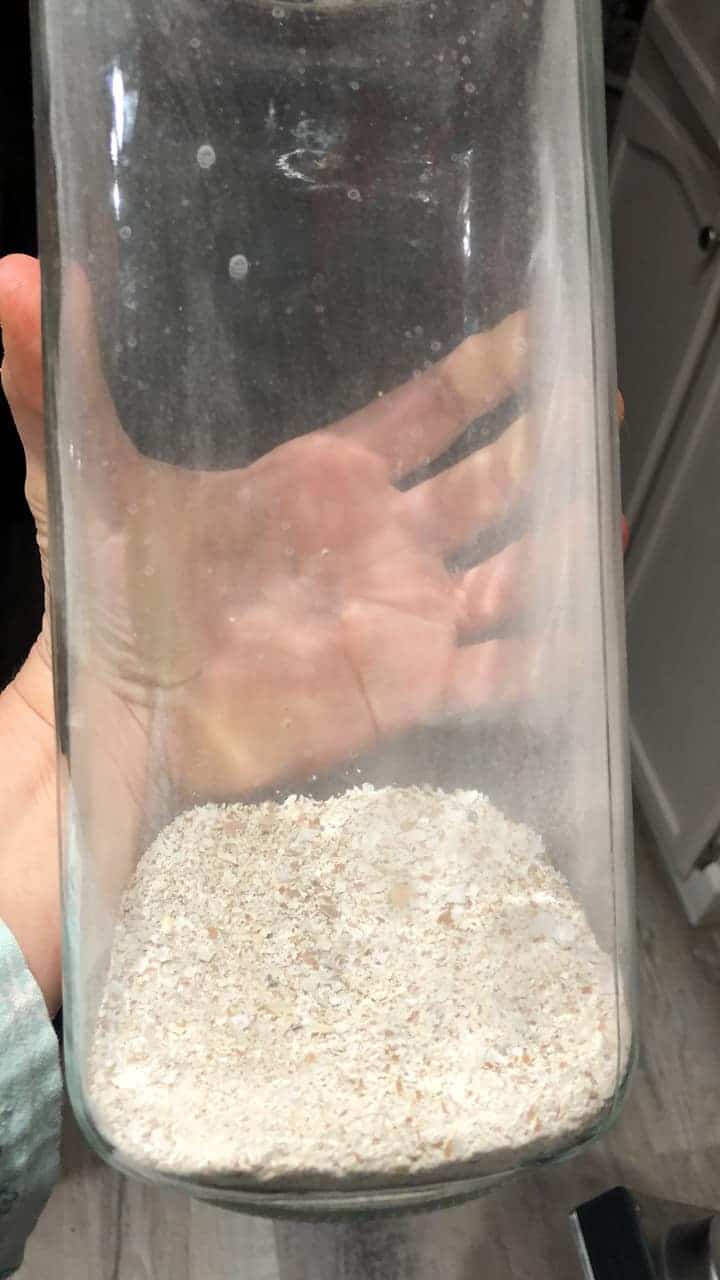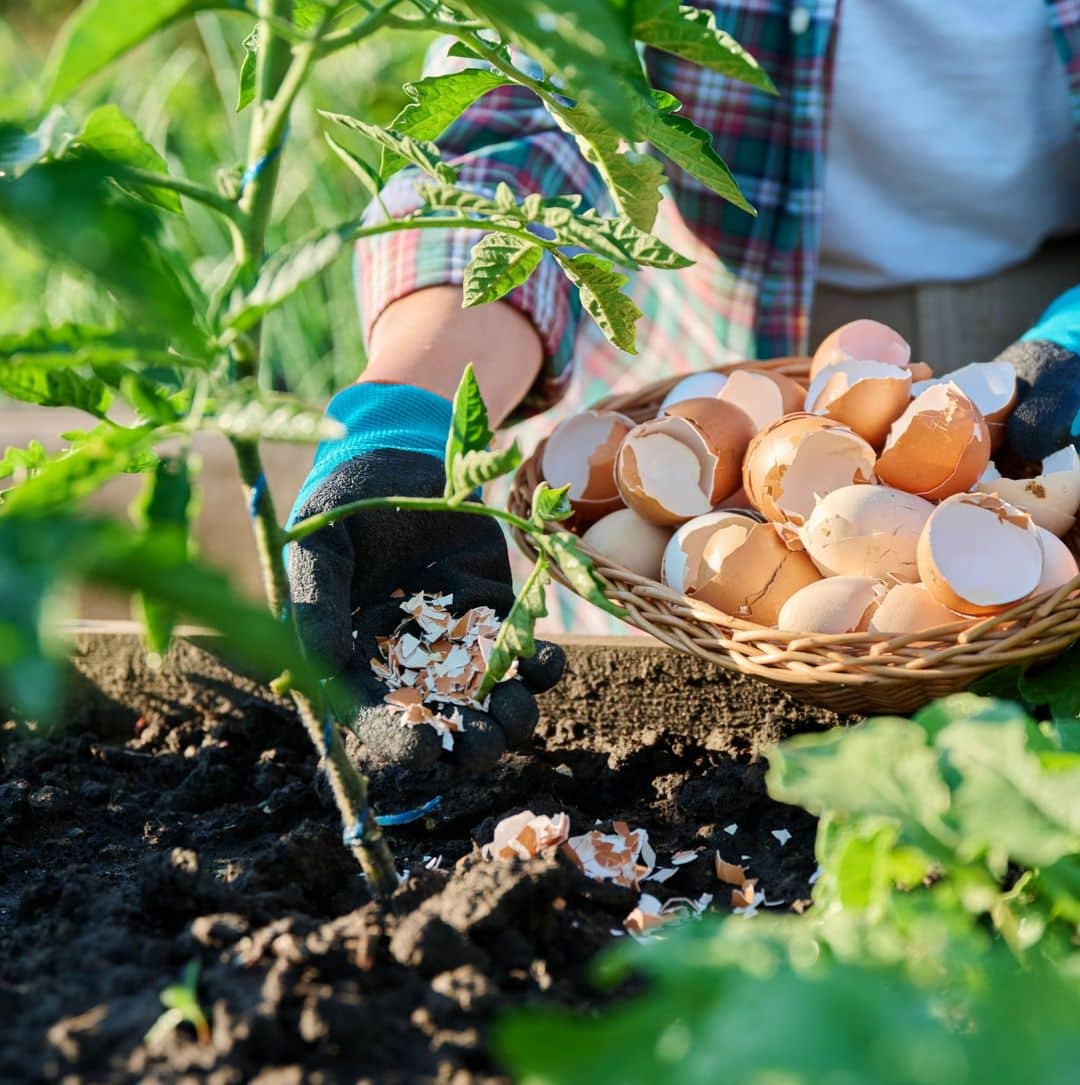Ever wondered about what you can do with the eggshells in your home beyond simply tossing them in the trash? Surprisingly versatile and packed with nutrients, eggshells offer a myriad of practical uses that extend well beyond the kitchen.
Eggshells can help you deter various garden pests, promote plant health, and enhance soil quality. But today, we focus on pest control.
In this guide, I’ll walk you through the steps for preparing, using, and storing the eggshells. Moreover, we’ll explore how eggshells work as organic pest control.
Eggshells As Organic Pest Control: How It Works
Eggshells are like a miniature minefield for soft-bodied pests such as slugs, snails, cutworms, and caterpillars. The sharp edges of crushed eggshells make it difficult and painful for these pests to cross— it’s like walking barefoot over broken glass.
When a soft-bodied pest attempts to cross eggshells to get to your plants, the sharp pieces scratch and cut their delicate skin, causing discomfort and deterring them from advancing further.
Eggshells’ benefits in your garden don’t stop at their protective prowess. As they break down, eggshells enrich the soil with calcium, a vital nutrient for plant health. Calcium aids in the development of strong cell walls and prevents issues such as blossom end rot in tomatoes and peppers.
This dual function makes eggshells a gardener’s secret weapon, as a physical barrier against pests and a natural fertilizer promoting robust plant growth.
Read More:
- How To Get Rid Of Slugs And Snails In Garden Naturally
- Best Home Remedies To Get Rid Of Bugs On Houseplants
How to Prepare Eggshells for Pest Control
Turning eggshells into powder is pretty straightforward. Cleaning, drying, and grinding are essential steps. Below, I’ll take you through the steps to properly prepare eggshell powder for your garden.
1. Collect and Clean The Eggshells
You’ll need a good amount of eggshells, so collect them over time. Rinse the shells under cold water after cracking open eggs for cooking or baking to remove any remaining egg whites or yolks.
Cleaning the shells is crucial because it prevents odors and minimizes pest risk when storing them. Store your clean eggshells in a clean, dry container.
2. Dry The Eggshells
This is an important step, so don’t skip it. Before crushing the eggshells, dry them completely. Dry eggshells are more brittle and easier to crush into small pieces, resulting in a smoother and more uniform texture.
Also, dry them to reduce the likelihood of attracting pests or mold growth (which can cause bacteria) while storing them. Drying the eggshells helps preserve them until you’re ready to use them.
So, how do you dry the eggshells? There are simpler and fancy ways; choosing the one you prefer is up to you.
a) Air Drying
Simply place your eggshells on a paper towel or drying rack, put them on a counter, and let them air dry naturally for a day or two until completely dry. If you don’t want to clutter your counters, toss the eggshells in a paper bag and leave them in your pantry for a couple of days.
When tossing the eggshells into a paper bag, avoid stacking them to encourage quick drying and prevent mold. Instead, place one eggshell at a go.
b) Oven Drying
Dry the eggshells over low heat, so preheat the oven to about 200°F. Spread out the washed eggshells on a baking sheet. After that, put them inside the oven for about 10-15 minutes to dry them thoroughly. Monitor closely to avoid overheating or burning.
c) Microwave Drying
Microwave your eggshells on high for about 1-2 minutes, checking every 30 seconds, until dry. Similar to using the oven, be cautious when using the microwave, as the eggshells can quickly overheat and cause burns.
d) Sun Drying
You can also take advantage of a sunny day to dry your eggshells. Lay them out on a tray or cloth in direct sunlight and turn them occasionally to ensure even drying.
3. Crush The Eggshells
Once you have collected and dried enough eggshells, crush them into small pieces. You can do so manually or mechanically.
1. Manual Crushing
Crush the eggshells with your hands. Alternatively, place the eggshells inside a plastic bag or between two pieces of cloth and crush them using a rolling pin or a sturdy bottle.
2. Mechanical Crushing
First, break the eggshells into smaller pieces, then pulse them in a blender or food processor. Another way is to grind them in a coffee grinder.
A coffee grinder does an impeccable job of producing a fine powder. On the other hand, a food processor produces larger pieces.
How to Use Eggshells As Organic Pest Control
Once you have your crushed eggshell, you can use it right away or store it until you are ready to use it (more on storage in the next section).
i) Sprinkle The Eggshells Directly On the Pest Insect
Eggshells don’t discriminate; they can kill even beneficial insects. How can I avoid this, you ask? Sprinkle the eggshells directly on the pest insect you wish to kill or deter.
For instance, you can use this approach to deal with Japanese Beetles. If you sprinkle it directly on them, it will disturb them. The beetles won’t die immediately; they may even fly away but will die in time.
ii) Create A Barrier Around Your Plants
Control slugs, flea beetles, snails, and ants with crushed eggshells by sprinkling a generous amount around the base of your plants to form a protective ring. The shells’ sharp edges will deter these crawling pests from crossing the barrier and reaching the plants.
Develop a layer thick enough to create a visible barrier but not so dense that it impedes watering or air circulation around the plant stems.
I recommend using this method, particularly on seedlings, young plants, and other plants known to attract pests like slugs, snails, or beetles. Apply crushed eggshells early in the season when your plants are most vulnerable to pests.
iii) Mix Eggshells into the Soil
Mix crushed eggshells directly into the soil for long-term pest control and soil improvement. You can do this when preparing garden beds or planting seedlings. The eggshells will slowly break down, releasing nutrients like calcium into the soil while deterring pests.
Loosen the soil where you plan to mix in the eggshells by digging or tilling. Then, sprinkle the crushed eggshells evenly over the loosened soil (about 1 cup of crushed eggshells per square foot of soil) and mix them thoroughly into the soil.
Note
Applying crushed eggshells can get messy, so be careful. Wear gloves to protect yourself from the sharp edges, and don’t wipe your hands on your pants to avoid making them dirty. Better yet, use a pest powder duster.
How To Store Eggshells
Provided your crushed eggshells remain dry, you can store them until you are ready to use. Get a clean, dry tin with a seal. Make sure the eggshells are completely dry before storing them because moisture can cause them to degrade and lose their effectiveness as pest deterrents.
Fill the container with the crushed eggshells, but leave some space at the top to easily access and use the eggshells. Close the lid tightly.
The best place to store crushed eggshells is a cool, dry spot- keep out of direct sunlight. You can choose the garage, pantry, or even a cupboard.
Tips for Using Eggshells as Pest Control
We’ve covered how eggshells repel and kill pests and how to prepare, use, and store the powder. However, here are additional tips.
- Over time, eggshells will break down and lose their effectiveness as a physical barrier. Water can also wash the powder away. Therefore, reapply the eggshells after heavy rain, watering, or as needed to retain a protective barrier around your plants.
- Eggshell powder doesn’t deter or kill all kinds of pests. Although it is effective on some pests on its own, combining it with other organic pest control methods makes your pest control more potent and delivers better results—pair eggshells with diatomaceous earth, neem oil, or companion planting to create a multi-layered defense.
- Avoid overapplying eggshells. Doing so can alter your garden’s soil pH, making it more alkaline. Moreover, too much calcium can disrupt the balance of other vital nutrients, potentially causing deficiencies or toxicities.
Final Remarks
The next time you crack an egg, remember to save the shells and put them to good use in your garden. By using eggshells to control pests, you not only reduce waste but also create a safer and healthier environment for your plants to thrive. If you don’t have access to eggshells, diatomaceous earth is effective and pretty cheap as well.

I’m Mike Hyle, an exterminator with 7+ years of experience handling all sorts of pests, including mice, cockroaches, bed bugs, and termites. I also write for Pest Solutions DIY blog to share my knowledge and help homeowners keep their homes pest-free. Outside work, I enjoy hunting, snowshoeing, and exploring nature. Check out my blog for helpful pest control tips!




